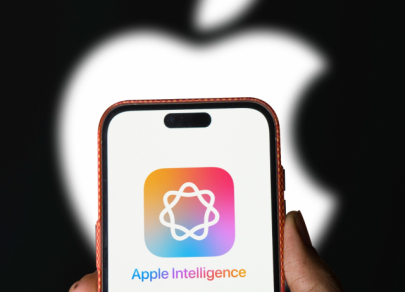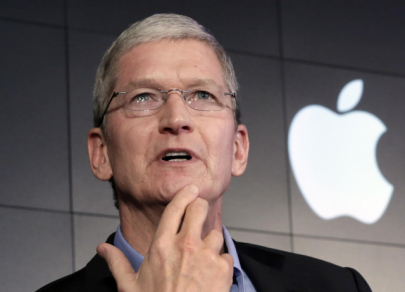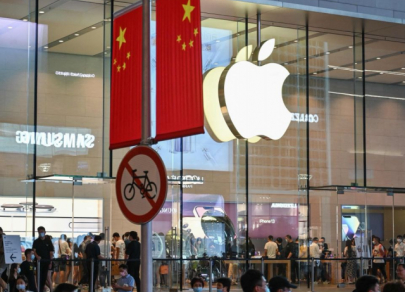FX.co ★ Apple Inc. losing its shine facing 10 grave challenges
Apple Inc. losing its shine facing 10 grave challenges
1. Failed leadership in AI race
Since the explosive rise of generative AI, Apple has largely stayed on the sidelines, watching competitors integrate neural networks into their products one by one. Only last year did the company unveil Apple Intelligence, an ambitious system meant to regain user interest and close the gap, but its launch was plagued by delays and technical shortcomings. While OpenAI and Google push AI forward, Apple is still searching for a confident voice in one of the fastest-growing fields of recent years.

2. Still searching for new billion-dollar idea
Last year, Apple shuttered Project Titan: a massive, decade-long electric vehicle initiative intended to open a new product category. At the same time, work on AR glasses was halted, experiments with an Apple Watch camera ended, and in-house display production ceased. Now, no breakthrough innovation remains on the horizon. Apple is losing internal momentum while cutting costs. Amid flat revenue, this increasingly looks like confusion rather than strategy.

3. Lagging behind in headset market
Apple’s entry into headsets began with the high-profile Vision Pro—technically impressive but expensive, bulky, and lacking a clear consumer purpose. Contrary to expectations, the device has not driven mass demand: its functionality is limited, content is scarce, and everyday use is hindered by weight and design. While competitors chase broad adoption, Apple still offers what feels more like an engineering experiment than a commercially mature technology.

4. Risk of losing stable revenue stream
The revenue-sharing agreement with Google, making it the default search engine, brings in about $20 billion annually, almost without operating costs. But that stream is threatened by an antitrust lawsuit against Google, which calls the deal anti-competitive. If struck down, Apple could lose one of its most reliable service-layer income sources. The company is already exploring alternatives—from integrating OpenAI to talks with other AI platforms, but replacing such monetization will not be easy.

5. Pressure on App store
A California court ruling threatened one of Apple’s key monetization models—App Store commission fees. Developers can now direct users to external payment options, bypassing Apple’s system. This threatens app revenue from subscriptions and in‑app purchases. Moreover, similar regulatory actions could be imposed globally outside the US.

6. Rising antitrust risks
Apple increasingly finds itself under antitrust scrutiny. In March 2024, the US Department of Justice and 16 states accused the company of blocking competition and restricting user choice, targeting ecosystem components from messaging and smartwatches to cloud gaming and digital wallets. Meanwhile, Europe’s Digital Markets Act has taken effect, reducing Apple’s control over the App Store.

7. Tariff threats & supply chain reconfigurations
Apple’s dependence on Chinese manufacturing makes it vulnerable to external economic threats. Former President Trump’s April statements about tariffs of up to 145% exacerbated the pressure. Although Apple is diversifying and moving some assembly to India, it remains exposed. Potential tariffs on smartphones built outside the US threaten pricing strategy. Domestic production, even Apple concedes, remains economically unviable.

8. Cook’s departure & leadership vacuum
Tim Cook, who has led Apple for over a decade, turned the company into a $3 trillion+ behemoth. But he turns 65 in 2025. Thus, succession questions are growing. Many of his close companions are similarly aged, raising the risk of simultaneous departures. John Ternus, head of the hardware division, is a rumored successor, but even a smooth transition will not be easy.

9. Slowing sales in China
China has long been critical to Apple’s sales and supply chain. However, in Q2, revenue in the country declined over 2%, missing even conservative analyst forecasts. Rising competition from local brands, restrictions on foreign tech, and geopolitical tensions greatly amplify risk. What was once an advantage is increasingly a source of instability.

10. Weakening iPhone demand
Despite promotional efforts around iPhone 16 and an emphasis on AI features, demand has underperformed. December quarter iPhone revenue dropped 1%—a troubling sign for a product that still accounts for nearly half of Apple’s overall revenue. The cheaper iPhone 16e failed to invigorate demand: it was pricier but not revolutionary. Without compelling innovation, device upgrade cycles continue to decelerate.






















